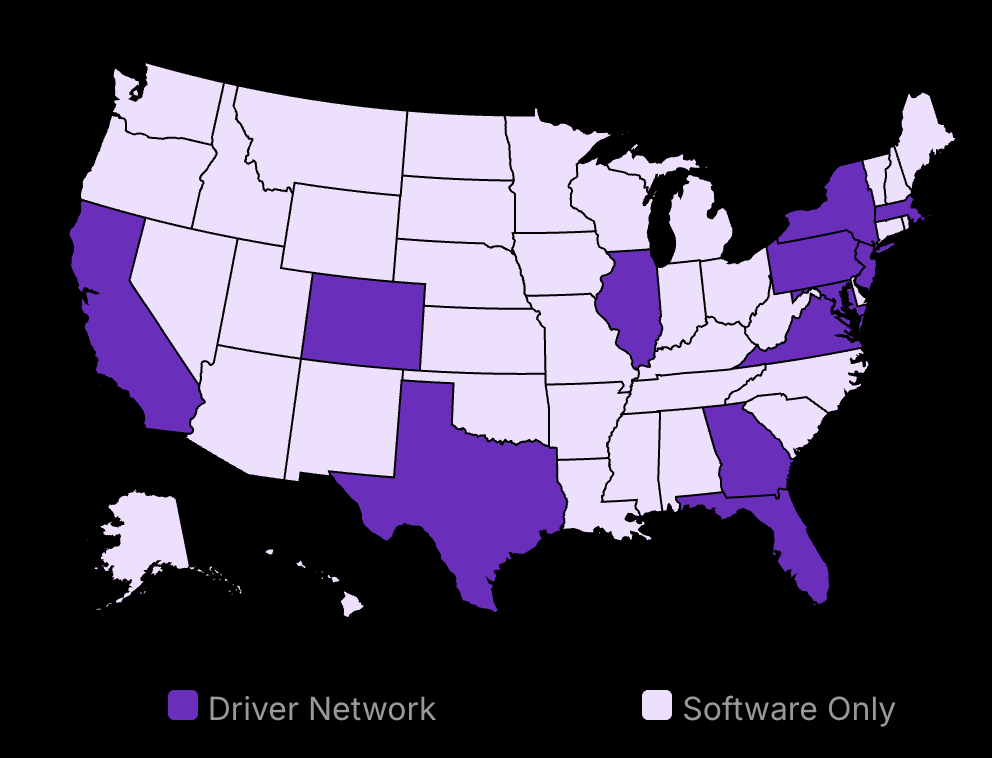Restaurants need staff right now, and addressing this challenge requires understanding the broader context of the labor market. The restaurant industry faces acute shortages of available workers, impacting industries hardest hit by the aging workforce, including the health care sector and the manufacturing industry. This labor shortage is a direct result of several factors, including low birth rates, an aging population, and changing labor market data that highlight the need for workers in specific occupations.
To meet this demand, successful restaurants are focusing on offering competitive pay, flexible schedules, clear growth paths, retention bonuses, healthcare benefits, and building a strong team culture. A key aspect of this strategy is attracting working age adults, especially in light of the baby boomer generation nearing early retirement and a decreasing number of available workers. The unemployment rate has fluctuated, but the current labor market continues to present opportunities for unemployed job seekers—especially those with the skills to meet skills shortages.
Several restaurants have found success by integrating technology and streamlining operations, improving work conditions, and focusing on employee well-being. For instance, one restaurant implemented a cross-training program and saw its vacancy rates decrease dramatically, allowing it to retain skilled workers while filling unfilled jobs faster. These shifts are crucial as we move into the next decade, where economic growth and gdp growth will increasingly depend on how businesses manage their workforces.
At the same time, many restaurants are realizing the importance of offering health care benefits to attract and retain foreign-born workers, a growing segment of the labor force. According to a senior labor economist interviewed by the Washington Post, the demand for workers in service industries like restaurants is outpacing the supply due to the aging population, rising storm of social assistance, and an insufficient number of trade schools to provide skilled labor for manufacturing industries and other sectors.
To move forward, restaurants need to address not just short-term job vacancies, but the long-term structural changes in the labor force that will continue to influence unemployment rates and the availability of workers. With skills-based hiring and strategic investment in technology and employee training, restaurants can combat the skills shortages and the aging workforce while meeting the evolving demands of the national level labor market. As restaurants evolve to meet these changes, they must also consider their financial strategies. A key aspect in this regard is exploring how to manage rising labor costs effectively without compromising on service quality or employee satisfaction. For insights into tackling these issues head-on, check out this guide on managing labor expenses.

Lower your delivery costs by 23%
How we reduce costs:
- No delivery vehicle expenses
- Optimized local routes
- Pay-per-delivery model
- Average 23% delivery cost reduction
Understanding America’s Labor Shortage: 7 Data-Backed Tips for Restaurants
The Bureau of Labor Statistics (BLS) paints a clear picture: Demand for workers in the leisure and hospitality sector remains high, but finding enough workers is a constant struggle. This section aims to provide managers with simple yet effective strategies to mitigate the impact of this labor shortage in their restaurants.
Open Jobs in Hospitality: As of December 2024, the Bureau of Labor Statistics reported approximately 10,092 open jobs in the leisure and hospitality industry, with only 942,000 new hires, down from nearly 10,068 in December 2023.
1. Strategic Technology Adoption for Operational Efficiency
Technology isn’t just about automation; it’s about empowering your staff and improving the guest experience. Conduct a thorough assessment of your current operations, identifying bottlenecks and time-consuming tasks that could benefit from technological solutions.
The goal is to improve productivity, reduce errors, and free up employees to focus on tasks that require human interaction and creativity. Consider cloud-based solutions for better scalability.This helps increase labor force participation rate because the restaurant is a more pleasant place to work.
2. Intelligent Scheduling Software Implementation
Moving beyond basic scheduling tools, look for platforms that incorporate predictive scheduling based on historical data and demand forecasting. These features help optimize staffing levels, minimize labor costs, and ensure adequate coverage during peak hours. Crucially, prioritize software that provides employees with greater control over their schedules, allowing them to easily swap shifts, request time off, and manage their availability. This flexibility can significantly improve employee retention.
Hourly Employee Turnover in Full-Service Restaurants: In full-service restaurants, hourly employee turnover peaked at 125% in Q4 2021 and Q1 2022 but decreased to 96% by Q3 2024.
Invest in comprehensive training for both managers and employees, ensuring everyone understands how to utilize all the features of the software. Provide ongoing support and encourage feedback to identify areas for improvement.
Hourly Employee Turnover in Limited-Service Restaurants: In limited-service restaurants, hourly employee turnover peaked at 173% in Q1 2022 but decreased to 135% by Q3 2024.
3. Streamlined Order Management Systems for Enhanced Customer Experience
Digital order management systems, whether table-side tablets, self-service kiosks, or mobile ordering apps, can significantly improve order accuracy, reduce wait times, and enhance the overall customer experience. These systems also provide valuable data insights into customer preferences and spending habits, allowing you to optimize your menu and service offerings.
Ensure seamless integration with your kitchen display system (KDS) to streamline order flow and minimize communication errors. Regularly update the software and hardware to maintain optimal performance.
4. Real-Time Inventory Management for Waste Reduction and Cost Control
Traditional inventory management methods are often inefficient and prone to errors. Implement an advanced inventory management system that provides real-time visibility into stock levels, tracks product expiration dates, and automatically generates purchase orders based on demand forecasts. This not only reduces waste and minimizes spoilage but also optimizes purchasing decisions, leading to significant cost savings. High demand can be met if there is good inventory control.
Restaurant Job Growth: In September 2024, nearly 70,000 jobs were added to the restaurant industry; however, the demand for more workers remains unmet.
5. Automated Payroll and HR Processes for Increased Efficiency
Automating payroll and human resources functions can free up valuable time for managers and HR staff, allowing them to focus on more strategic initiatives, such as employee training and development. Implement a comprehensive HR platform that handles tasks like payroll processing, benefits administration, performance management, and compliance tracking.
Integrate your payroll system with your time and attendance tracking system to ensure accurate and timely payment of wages.
Employee Retention Challenges: Approximately 45% of restaurant employees have left a job due to poor management or negative interactions with supervisors.
6. Standardized Operating Procedures for Consistency and Quality
Develop clear, detailed standard operating procedures (SOPs) for every task, from food preparation to customer service. These SOPs should be easily accessible to all employees and regularly updated to reflect best practices. Standardization ensures consistency, reduces errors, and improves overall quality.
Staffing Below Pre-Pandemic Levels: As of early 2024, restaurant staffing was still 3.6% below pre-pandemic levels, with about 450,000 open positions compared to 2019.
Use visual aids, such as videos and checklists, to reinforce training and ensure that employees understand the SOPs.
7. Cross-Training for Flexibility and Coverage
Invest in comprehensive cross-training programs that equip employees with the skills and knowledge to perform multiple roles. This not only provides flexibility in staffing but also enhances employee versatility and improves job satisfaction.
Average Annual Turnover Rate: The average annual turnover rate in the restaurant industry over the past decade has been 79.6%.
Offer incentives and recognition for employees who successfully complete cross-training programs.
8. Proactive Employee Feedback Mechanisms for Continuous Improvement
Establish formal channels for gathering employee feedback, such as regular surveys, one-on-one meetings, and suggestion boxes. Actively solicit and respond to employee suggestions, demonstrating that their opinions are valued and their voices are heard.
9. Optimize Task Workflows and Eliminate Inefficiencies
Conduct a thorough analysis of your restaurant’s workflows to identify bottlenecks, redundancies, and inefficiencies. Use process mapping techniques to visualize the flow of work and identify opportunities for improvement.
Job Openings Decline: In December 2024, the number of job openings decreased to 7.6 million, a reduction of 556,000 from the previous month.
Encourage employees to identify and suggest ways to streamline tasks and improve efficiency.
10. Prioritize Employee Well-being and Create a Positive Work Environment
In today’s competitive job market, employees are looking for more than just a paycheck. Create a positive and supportive work environment that prioritizes employee well-being. This includes offering competitive wages and benefits, providing opportunities for professional development, fostering a culture of respect and inclusivity, and promoting work-life balance. Provide resources for mental health.
The demanding nature of F&B roles, coupled with factors like long hours, weekend shifts, and comparatively low wages, complicates the attraction and retention of talent. However, building a supportive and collaborative work environment can improve job satisfaction and reduce turnover. To further enhance employee retention, focusing on staff engagement is crucial. Engaged employees feel more connected to their work and committed to the organization, significantly impacting overall morale and productivity. Implementing measures such as regular feedback sessions, recognition programs, and opportunities for skill development can create a thriving workplace culture that prioritizes employee satisfaction.
By implementing these strategies, restaurants can not only address the immediate challenges of the labor shortage but also build a more sustainable and successful business for the future. Many employers are recognizing that investing in their workforce is the key to long-term success in the current job market.
Kevin P. Scott, co-founder of ADDO, notes, “We may have a labor shortage, but we don’t have a labor shortage for employers who are really taking care of their folks.”
Why Does the Labor Shortage Happen in Restaurants?
Understanding economic and social dynamics helps address staffing.
Identifying career shifts can guide strategic labor policies.
Awareness of cultural shifts clarifies staffing challenges paths.
Economic Factors
Economic changes play a crucial role in the labor shortage faced by restaurants. Inflation is increasing faster than wages in food service, pushing potential hires toward higher-paying sectors. Despite recovery from 2020, the overall shift is moving in favor of industries offering stability and rewards beyond mere monetary compensation. Job seekers are paying more attention to benefits like health insurance and retirement plans.
Shift in Employment Preferences
A shift in employment preferences is another contributing factor to the restaurant labor shortage. Many workers now value jobs that offer more than just a paycheck. Within the hospitality industry, other issues like unpredictable scheduling and high physical demands turn potential workers toward jobs that are reputed to have more humane working conditions. This changing dynamic suggests that the industry must adapt its offerings to stay competitive.
Social & Cultural Shifts
Cultural expectations around work-life balance have become more pronounced, especially as the world recovers from a pandemic. Careers that promise a balanced lifestyle now appeal more to younger workers. It’s important for restaurants to consider employee satisfaction. To attract top talent, they need to rethink work hour structures and offer flexible shifts. Moreover, the labor shortage is heavily influenced by workers seeking careers that align with their personal and family values.
Rise of Remote Work
Remote work has fundamentally altered the employment landscape. With traditional office and service roles are less appealing to many workers. The restaurant industry is highly location-bound, offering little of the autonomy or flexibility remote work provides. This differential suggests a shift in customer behavior, especially noticeable during lunch hours when customer turnout has dropped. A book covering employment shifts is “The Great Resignation” by Anthony Klotz, which discusses how remote work processes are shifting traditional industry practices.
Demographic Changes and Workforce Aging
As the population ages, the talent pool available to restaurants also changes. Older workers retiring means fewer experienced hands, with younger generations not immediately filling these roles. This demographic shift creates an urgent need for restaurants to understand the changing motivations and aspirations of younger workers. To remain viable, there is a growing focus on making restaurant jobs more attractive to younger talent.
Expanding Career Options Beyond Restaurants
In recent years, workers have seen more career options than ever before. The hospitality industry has become less desirable due to its often grueling hours and lower wages. Potential employees can now explore opportunities in industries that offer more predictable schedules, better conditions, and improved career progression.
Economic recovery has created a job market with more openings than skilled workers, giving individuals a broader range of choices. With all these changes, books like “Who Moved My Cheese?” by Spencer Johnson explore how individuals and enterprises can navigate evolving workplace scenarios.
Understanding these complex layers can help restaurant managers develop strategies to handle labor shortages more effectively. They must adapt continuously to shifts in economic, social, and cultural landscapes to sustain operations.
Preventing Future Labor Market Shortages
Growth and development keep staff around
Strong culture builds loyalty
More training equals better-skilled team
Focus on Employee Development
Regular training and upskilling sessions keep employees engaged and motivated. Training helps them feel valued. Engage them with new skills and improve their career prospects. Skilled staff handle customer demands efficiently, reducing workload stress. This makes regular training vital for retention. It builds a loyal team ready to rise with your restaurant.
Pathways for advancement within a restaurant are equally important. When employees see a future with growth opportunities, they are less likely to leave. Offer clear paths in their careers through promotions and skill enhancement programs. Creating roles like “shift lead” or “trainer” can encourage staff to stay as they seek promotions. With growth options, staff recognize the restaurant’s commitment to their future. They’ll prefer staying than job-hopping for better prospects.
When employees are given opportunities to learn, grow, and pursue their goals, they feel valued and engaged. Moreover, organizations that prioritize employee development tend to attract and retain top talent more effectively, as individuals are drawn to companies invested in their personal and professional growth. – Dr. Charles Tawk, Partner at Meirc Training & Consulting
Build a Positive Work Environment
A positive work environment is a key ingredient in staff retention. Foster open communication and encourage feedback to create a sense of belonging. Regular check-ins with team members show respect for their opinions. Cultivating open dialogue reduces misunderstandings. It enhances cooperation. Staff are more likely to remain where they feel heard and appreciated.
Teamwork and recognition systems further enhance the work environment. Recognizing contributions and fostering teamwork boosts morale. A positive atmosphere reduces stress, leading to improved job satisfaction. Some restaurants use “Employee of the Month” programs, or team-based rewards like outings or bonuses, to motivate staff. Recognition makes them feel valuable, boosting loyalty.
Culture plays a crucial role in retaining talent within the organization as well. Define your company’s values and build a culture that people want to be a part of. – Andrey Chshelokovskiy, 360 Painting of Dallas
Preventing future labor shortages is about growth and culture. Investing time and resources in these areas builds a loyal, skilled workforce, ready to tackle any challenge.
Extending Tactics Beyond Labor Shortages
Increases operational profits and service quality
Retains employees and boosts employer reputation
Operational Efficiency
Streamlining Processes Leads to Greater Profitability
Restaurants should aim for efficient operations to boost profits. One way is adopting Business Process Management (BPM). It helps refine workflows, reducing time and effort in daily tasks. Orhan Toprak points out that organizations are valuing BPM more now (SOCAR Türkiye). Using technology in an efficient operation magnifies effectiveness, as Bill Gates observes. It’s crucial to assess current processes before implementing any new tech to avoid magnifying inefficiencies. Books like “The Lean Startup” by Eric Ries give insight into efficient business models that can guide these efforts.
Lean principles from manufacturing can be applied to restaurant operations. By focusing on customer service processes and inventory management, restaurants can cut costs.
Improves Service Quality and Customer Satisfaction
Faster service leads to happier customers. Service quality impacts return rates and profits. An efficient kitchen workflow ensures dishes are prepared and served punctually. This aligns with customer expectations, which keeps them coming back. Operational excellence also improves customer experience, gains trust, and builds loyalty. OPEX professionals like Vinod Srinivasa understand this, stressing the need for a culture focused on excellence across all functions. Reading “The Goal” by Eliyahu M. Goldratt provides insights into optimizing bottlenecks in service delivery.
Employee Satisfaction
Retains Talent, Reducing Turnover Rates
Satisfied employees are less likely to leave. Creating a supportive environment decreases turnover, saving on hiring and training costs. Engaging employees with regular feedback and recognizing achievements is key. Monthly meetings can gauge employee needs and address concerns. Techniques from “Drive” by Daniel H. Pink can guide on what motivates today’s workforce beyond monetary incentives.
Cross-training is another way to enhance satisfaction. Employees with varied skills feel more valued and resourceful. This feeds into job security, personal growth, and workplace engagement. Providing opportunities for growth ensures more commitment from staff.
Enhances Brand Reputation as a Good Employer
A restaurant known for its employee care attracts and retains top talent. This reputation also appeals to discerning customers who appreciate companies with ethical practices. Businesses like Trader Joe’s are examples of companies known for their positive workplace culture. Books such as “Built on Values” by Ann Rhoades offer frameworks for developing a values-driven business culture.
Investing in employee satisfaction not only reduces turnover but also enhances the overall operational experience. It creates a cycle where happy employees lead to happy customers. These aspects are crucial for any restaurant looking to thrive in an industry challenged by labor shortages. These benefits ensure that strategies are sustainable and adaptable for future dynamics.
Secondary Information on Labor Force Participation Dynamics
1 in 4 people in the restaurant workforce consider leaving for gig roles.
A diverse team enhances creativity and decision-making.
Technology boosts efficiency but human presence ensures quality service.
Current Trends in Labor Force Participation Rates
Restaurants are experiencing significant changes in their workforce dynamics. The gig economy is reshaping the hiring landscape. One notable trend is that 1 in 4 people are exploring roles in the gig economy. This shift isn’t just about numbers. It reflects a desire for flexibility and autonomy. Food delivery services and on-demand staffing are particularly attractive. Platforms like Uber Eats and DoorDash often draw workers away from traditional restaurant roles. This poses challenges for restaurants trying to maintain a steady workforce.
Growing reliance on part-time workers is another trend. Restaurants are hiring part-time employees to address staffing needs. This approach offers flexibility but can impact service consistency. Full-time workers bring stability and deeper engagement, something that part-time workers might not provide. Balancing these different workforce elements requires careful planning. It involves understanding employee motivations and aligning them with business goals.
For those interested, the book The Gig Economy: The Complete Guide by Diane Mulcahy dives deeper into these workforce changes. It explores how businesses, including restaurants, can adapt to the gig economy. Reading this can provide insight into effectively navigating these workforce transformations.
Importance of Workforce Diversity
Diversity in the restaurant workforce is crucial. A mixed skill set and background among staff can improve problem-solving and innovation. When people from different backgrounds come together, it fosters new ideas and approaches. This can lead to improved customer engagement and satisfaction.
Promoting inclusivity in hiring practices amplifies these benefits. Inclusivity ensures that different voices are represented in decision-making processes. Restaurants that prioritize diversity create a more welcoming environment. This approach helps in attracting both employees and customers.
To expand your understanding, consider reading The Diversity Bonus: How Great Teams Pay Off in the Knowledge Economy by Scott E. Page. This book provides evidence-based insights into how diverse teams function better across industries. It’s a valuable resource for anyone looking to understand the impact of diversity on business performance.
Technology Impact on Jobs
The role of technology in the restaurant industry is significant. It introduces efficiency by automating routine processes. Yet, the need for human touch remains critical. Areas like customer service and personalized dining experiences cannot be fully replaced by machines. Human interaction ensures that customers feel valued and attended to.
However, some areas where technology can effectively supplement human roles include order management and inventory control. Automated order systems, for example, reduce wait times and errors. In contrast, inventory management software helps track stock levels accurately, minimizing wastage.
Arguments both for and against this technological integration abound. Proponents argue that it reduces costs and improves service speed. Critics highlight the potential loss of jobs and the diminished human experience. For a more comprehensive examination, The Second Machine Age: Work, Progress, and Prosperity in a Time of Brilliant Technologies by Erik Brynjolfsson and Andrew McAfee explores these dynamics thoroughly.
Terminology Explained
Understanding the language of labor economics and workforce dynamics is essential. Terms like “attrition rate” and “labor participation rate” often come up in industry discussions. Attrition rate refers to the rate at which employees leave a company. It’s a crucial measure for understanding workforce stability. Meanwhile, labor participation rate measures the active portion of an economy’s labor force. It’s an indicator of the economic health of the restaurant sector.
Clarifying industry jargon helps managers make informed decisions and communicate effectively. When you grasp these terms, analyzing workforce reports and planning strategies becomes more straightforward.
Additional Resources
To delve deeper into these topics, several resources can enhance your understanding. The book Restaurant Success by the Numbers by Roger Fields is a practical guide on managing restaurant operations amidst evolving workforce dynamics. Additionally, the National Restaurant Association offers reports and data that can guide decision-making.
For those looking to stay updated on industry trends, subscribing to QSR Magazine can provide valuable insights and statistics. The publication regularly covers workforce trends and technological advancements in the restaurant sector.
Conclusion
The labor shortage in restaurants is not a permanent problem. Successful restaurants are focusing on staff development, better technology, and smarter operations to address job openings and the professional and business services sector.
The key is to act now. Start with one change this week – maybe it’s testing new scheduling software or creating a cross-training program to tackle skills shortages. Small steps lead to big results in the construction industry and beyond.
Your restaurant can become a workplace where people want to stay and grow, responding to labor demand and creating an environment where staff feel valued. Think of each employee as a long-term investment, not just a response to enhanced unemployment benefits.
Remember: good staff management isn’t just about solving today’s shortage – it’s about preventing tomorrow’s challenges amid economic growth. The restaurants that thrive in 2025 and beyond will be those that put their people first while using smart systems to support them, including skills-based hiring and addressing employment growth.
Take what you’ve learned here and implement one strategy today to raise wages. Your restaurant’s future depends on the actions you take now



























